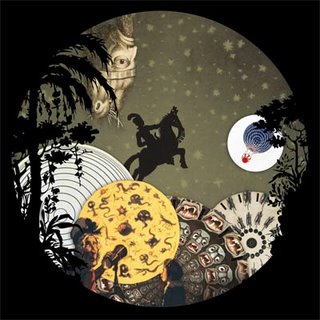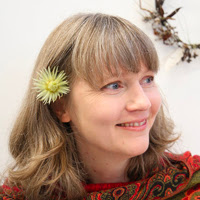
Eyes, Lies and Illusions
2 November 2006 - 11 February 2007
acmi (australian centre for the moving image)
Melbourne
A fantastic illustration for this exhibition enticed me to take a look inside whilst in Melbourne recently. So I wandered in on a Sunday morning only to be informed that the exhibition had a delayed opening time because the cleaners had accidently cleaned up a pile of rubbish in a corner which was in fact part of one of the exhibits. I'm sure I have heard of similar mishaps befalling other exhibits of modern art. Fortunately the rubbish was replaced with another equally suitable pile of rubbish and so the crisis averted. So it was with this reminder of the precarious nature of modern art's status as art and not rubbish that I approached the show.
According to the flyer provided the exhibition 'explores the art and science of visual perception from the Renaissance to the present day,' a promise which it did not disappoint. A wide variety of objects from shadow puppets to the photographs of Muybridge provided an excellent overview of the pre-history of modern cinema. I also attended a magic lantern show by Dr Ian Edwards which was a reminder of simpler times with it's straightforward visual humour and 'special effects' created by using two glass slides.
Of particular interest to me was a Camera Lucida, used by artists to draw objects in perspective, and a beautiful object called a Heliopyrograph, a glass ball which burns a trace onto paper to measure the intensity of sunlight.
Other treats included dioramas and perspective boxes, some of which were very intricate, and pictures inscribed with holes and with translucent areas lit from behind. Although very simple these were surprisingly effective and quite magical. Toys of sedition from France were another favourite - objects which cast shadows revealing profiles of prominent political figures of the day, signaling one's allegiances.
The collection also included Duchamp's Rotoreliefs and a selection of more recent works, such as Christian Boltanski's Les Bourgies (The Candles) 1986, fragile skeletal copper figurines casting equally fragile wavering shadows.
An unusual and rewarding exhibition, drawn from a collection accumulated by German experimental filmmaker Werner Nekes, it would be very appealing to anyone with an interest in perception.
(Note: imagery is copyright Werner Nekes).

1 comment:
great to read what you have been up to sounds like an interesting show
Post a Comment